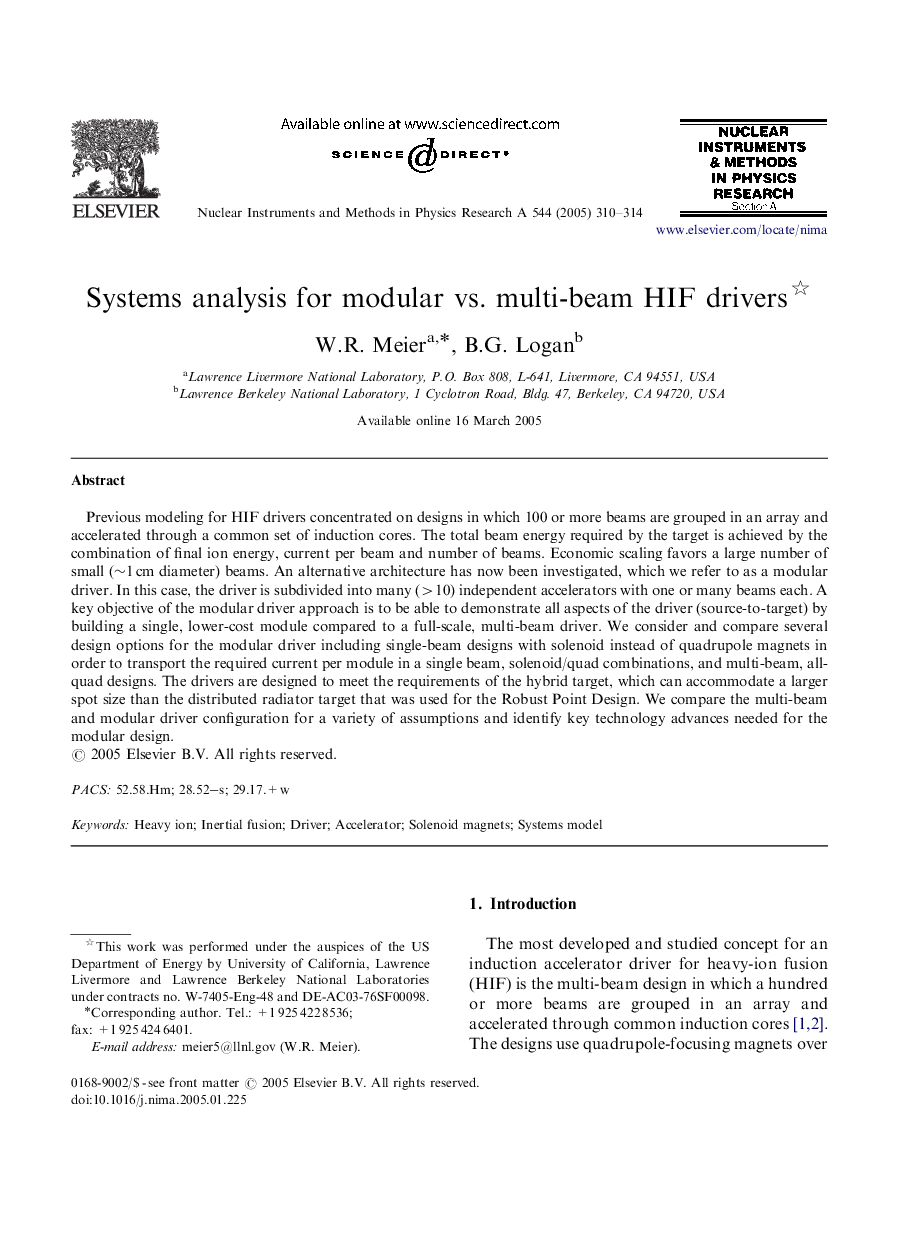| Article ID | Journal | Published Year | Pages | File Type |
|---|---|---|---|---|
| 9845474 | Nuclear Instruments and Methods in Physics Research Section A: Accelerators, Spectrometers, Detectors and Associated Equipment | 2005 | 5 Pages |
Abstract
Previous modeling for HIF drivers concentrated on designs in which 100 or more beams are grouped in an array and accelerated through a common set of induction cores. The total beam energy required by the target is achieved by the combination of final ion energy, current per beam and number of beams. Economic scaling favors a large number of small (â¼1Â cm diameter) beams. An alternative architecture has now been investigated, which we refer to as a modular driver. In this case, the driver is subdivided into many (>10) independent accelerators with one or many beams each. A key objective of the modular driver approach is to be able to demonstrate all aspects of the driver (source-to-target) by building a single, lower-cost module compared to a full-scale, multi-beam driver. We consider and compare several design options for the modular driver including single-beam designs with solenoid instead of quadrupole magnets in order to transport the required current per module in a single beam, solenoid/quad combinations, and multi-beam, all-quad designs. The drivers are designed to meet the requirements of the hybrid target, which can accommodate a larger spot size than the distributed radiator target that was used for the Robust Point Design. We compare the multi-beam and modular driver configuration for a variety of assumptions and identify key technology advances needed for the modular design.
Related Topics
Physical Sciences and Engineering
Physics and Astronomy
Instrumentation
Authors
W.R. Meier, B.G. Logan,
